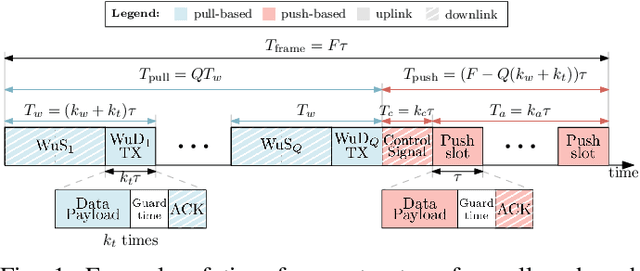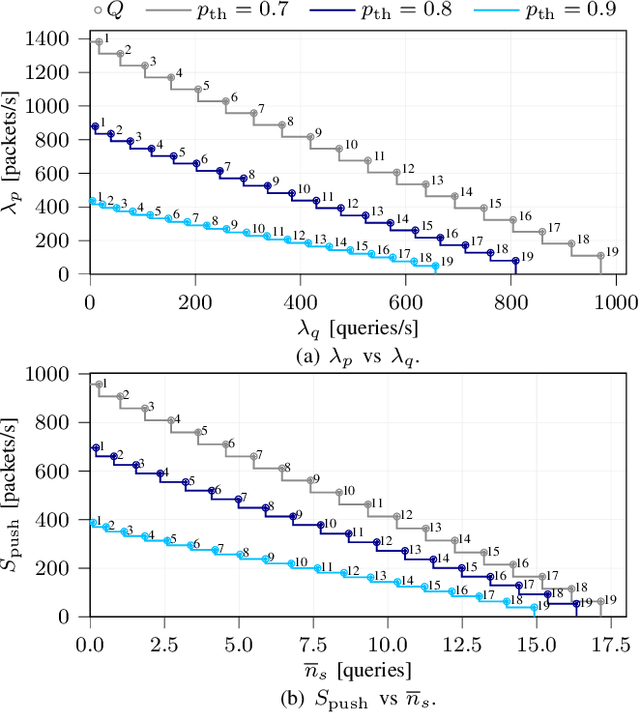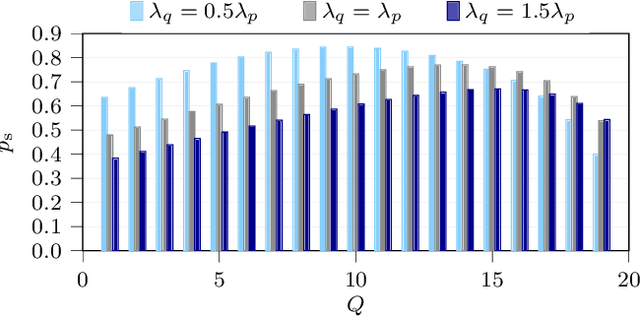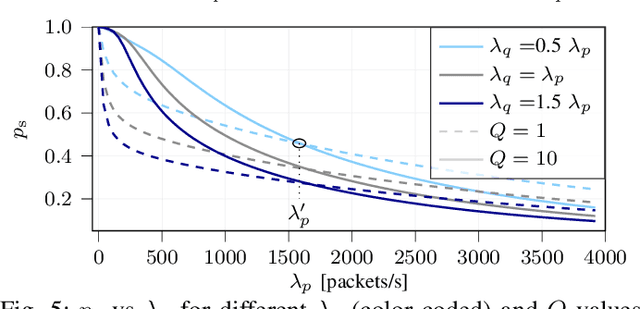Coexistence of Pull and Push Communication in Wireless Access for IoT Devices
Paper and Code
Apr 11, 2024



We consider a setup with Internet of Things (IoT), where a base station (BS) collects data from nodes that use two different communication modes. The first is pull-based, where the BS retrieves the data from specific nodes through queries. In addition, the nodes that apply pull-based communication contain a wake-up receiver: upon a query, the BS sends wake-up signal (WuS) to activate the corresponding devices equipped with wake-up receiver (WuDs). The second one is push-based communication, in which the nodes decide when to send to the BS. Consider a time-slotted model, where the time slots in each frame are shared for both pull-based and push-based communications. Therein, this coexistence scenario gives rise to a new type of problem with fundamental trade-offs in sharing communication resources: the objective to serve a maximum number of queries, within a specified deadline, limits the transmission opportunities for push sensors, and vice versa. This work develops a mathematical model that characterizes these trade-offs, validates them through simulations, and optimizes the frame design to meet the objectives of both the pull- and push-based communications.
 Add to Chrome
Add to Chrome Add to Firefox
Add to Firefox Add to Edge
Add to Edge